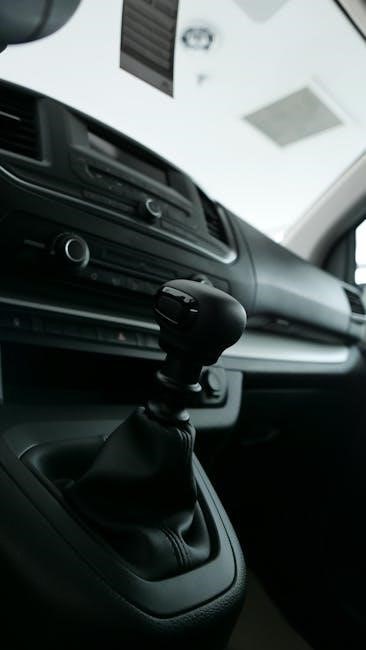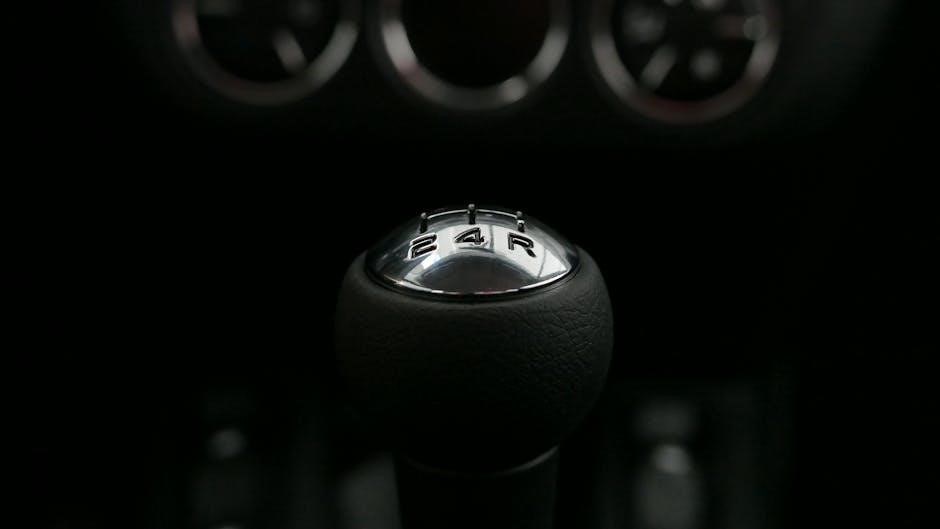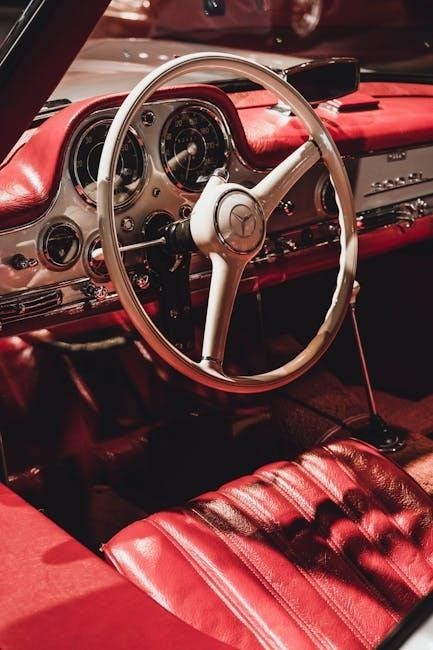Mercedes offers manual transmissions in few models like A-Class, B-Class, and CLA with various engines and displacements, using G for gearbox and two digits for coding purposes easily.
Overview of Mercedes Manual Transmission Models
Mercedes manual transmission models are available in various segments, including entry-level and high-performance vehicles. The company’s manual transmission offerings have been reduced over the years, with only a few models still featuring this option. The A-Class, B-Class, and CLA are some of the models that still offer manual transmissions. These models are equipped with different engines and displacements, providing customers with a range of choices. Mercedes uses a specific coding system for its manual transmissions, with the letter G followed by two digits, such as G56 for a 6-speed manual transmission. This coding system helps to identify the type of transmission used in each model. Overall, Mercedes manual transmission models are known for their performance and driving experience, making them popular among driving enthusiasts. The company’s manual transmission models have a loyal customer base.
History of Manual Transmissions in Mercedes
Mercedes started using manual transmissions in the 1950s with four-speed models becoming popular quickly and easily.
Early Models with Manual Transmissions
Mercedes-Benz’s early models featured manual transmissions, with the 1950s and 1960s seeing a range of four-speed manual transmissions being used in various models, including sedans and convertibles. The company’s early manual transmissions were known for their durability and smooth shifting, making them popular among drivers. As the years passed, Mercedes-Benz continued to develop and improve its manual transmissions, introducing new technologies and features to enhance performance and driver experience. The early models with manual transmissions played an important role in shaping the company’s reputation for building high-quality vehicles. With their rich history and heritage, these early models remain popular among classic car enthusiasts and collectors, who appreciate their unique character and driving experience, and the role they played in the development of the company’s manual transmissions. Mercedes-Benz’s early manual transmissions were truly innovative.

Current Models with Manual Transmission Options
Mercedes offers manual transmissions in A-Class, B-Class, and CLA models with various engines easily.
Entry-Level Models with Manual Transmissions
Mercedes entry-level models such as the A-Class, B-Class, and CLA are available with manual transmissions, offering a range of engines and displacements to choose from, including petrol and diesel options. These models are popular among first-time car buyers and those looking for a affordable and fuel-efficient vehicle. The manual transmission option is also a draw for driving enthusiasts who prefer the control and connectivity that a manual gearbox provides. With the current trend of automatic transmissions dominating the market, Mercedes entry-level models with manual transmissions are a rare find, making them a unique offering in the industry, with a focus on driving experience and fuel efficiency, making them a great choice for many buyers, with various trim levels and features available.
Mercedes Manual Transmission Codes
Mercedes uses G for gearbox and two digits for coding purposes easily identifying transmissions like G56 6-speed manual transmission models and options available.
Understanding Mercedes Manual Transmission Nomenclature
Mercedes manual transmission nomenclature is based on a coding system that uses the letter G followed by two digits, such as G56, to identify the type of transmission. This coding system allows for easy identification of the transmission model and its specifications. The G56, for example, denotes a 6-speed manual transmission. Understanding this nomenclature is essential for identifying the correct transmission model for a specific vehicle. Mercedes uses this coding system to differentiate between various transmission models and options. The nomenclature is used in conjunction with other vehicle specifications to ensure compatibility and proper functioning. By using this coding system, Mercedes provides a standardized way of identifying and specifying manual transmissions. This facilitates the selection and installation of the correct transmission model for a particular vehicle. The coding system is straightforward and easy to understand, making it accessible to both professionals and enthusiasts.

Discontinuation of Manual Transmissions in Mercedes
Mercedes will retire manual transmissions in 2023, switching to automatic-only cars completely and phased out manual options.
Reasons Behind the Discontinuation of Manual Transmissions
The reasons behind the discontinuation of manual transmissions in Mercedes are largely due to the shift towards automatic-only cars and the increasing demand for electric vehicles. As the company moves to phase out manual options, it is likely that the lack of demand and the need to focus on more popular transmission types have contributed to this decision. Additionally, the rise of electric vehicles has led to a decline in the need for manual transmissions, as EVs typically do not require manual shifting. This transition is expected to be complete by 2023, marking the end of an era for manual transmissions in Mercedes vehicles. The company’s decision to discontinue manual transmissions is a significant one, and it will be interesting to see how it affects the market and consumer preferences. With the focus on electric vehicles, manual transmissions are becoming less relevant.

Impact of Electric Vehicles on Manual Transmissions
Electric vehicles are making manual transmissions less necessary and less popular among car buyers slowly every day now.
Enthusiasts’ Concerns about Electric Vehicles and Manual Transmissions
Enthusiasts are concerned about the loss of manual transmissions in electric vehicles, citing a lack of driving engagement and fun. Many believe that electric vehicles are less enjoyable to drive due to the absence of a manual transmission. The transition to electric vehicles has sparked a debate among car enthusiasts, with some arguing that the loss of manual transmissions is a significant drawback. Others argue that the benefits of electric vehicles, such as improved performance and reduced emissions, outweigh the loss of manual transmissions. As the automotive industry continues to evolve, it will be interesting to see how enthusiasts respond to the changing landscape of electric vehicles and manual transmissions, and what solutions manufacturers will offer to address these concerns and provide a more engaging driving experience. Electric vehicles are becoming increasingly popular.

on Manual Transmission Mercedes
Mercedes manual transmissions are being phased out, with automatics becoming the norm, changing the driving experience completely now and forever online.
Final Thoughts on the Future of Manual Transmissions in Mercedes
As the automotive industry continues to evolve, the future of manual transmissions in Mercedes looks uncertain. With the rise of electric vehicles, manual transmissions may become a thing of the past. Many enthusiasts are concerned about the loss of driving experience that comes with manual transmissions. The internet is filled with discussions about the phasing out of manual transmissions in Mercedes, with some people expressing their disappointment and others seeing it as a natural progression. The shift towards automatics and electric vehicles is likely to change the driving experience forever, and it will be interesting to see how Mercedes adapts to this change. The company’s decision to phase out manual transmissions will likely have a significant impact on the driving community, and only time will tell how this change will be received. Mercedes is moving forward with its plans, and the future of manual transmissions in the company’s vehicles is looking increasingly uncertain.



